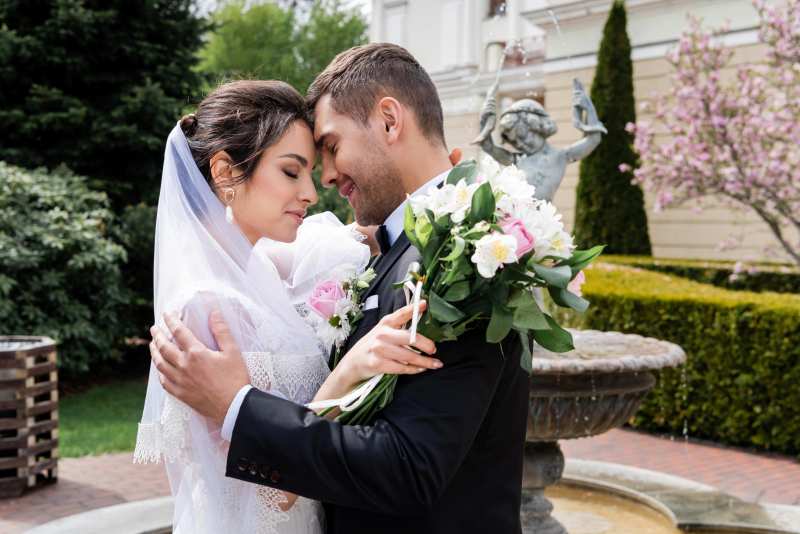Trying to bring your partner to the U.S. but not sure which Visa to go with? You’re not alone. Many couples get stuck deciding between the K-1 fiancé(e) Visa and the CR-1 marriage Visa, and picking the right one can make a big difference.
In this guide, you’ll get a clear, side-by-side look at both options: what they require, how long they take, and what each means for your future together. This way, you can choose the Visa that best fits your situation and goals.
Overview Of K-1 Fiance Visa
The K-1 Fiancé(e) Visa is a nonimmigrant Visa created for foreign nationals engaged to U.S. citizens. It allows the foreign fiancé(e) to enter the United States legally to marry their U.S. citizen partner within 90 days of arrival.
This process requires strict compliance with eligibility criteria and documentation. It is not available to lawful permanent residents—only U.S. citizens may petition for their fiancé(e). Understanding the specific requirements and procedural steps is crucial before pursuing this option, especially given the strict timeline after arrival.
Fundamentals Of The CR-1 Marriage Visa
The CR-1 Marriage Visa is an immigrant Visa designed for foreign nationals legally married to U.S. citizens. Unlike the K-1 Visa, this document is available only after the couple has tied the knot. This Visa allows the foreign spouse to enter the United States as a conditional permanent resident. It will enable them to live and work in the country immediately upon arrival.
The “CR” in CR-1 stands for “Conditional Resident.” It refers to the two-year conditional status granted to spouses married for less than two years at entry. This Visa is ideal for couples who have already formalized their marriage outside the U.S. and want to avoid additional adjustment processes after arrival.
Direct Comparison Of K-1 Fiancé(e) Visa & CR-1 Marriage Visa
Understanding the key differences is essential when deciding between the K-1 and the CR-1 Visa. These types serve different purposes and come with distinct timelines, financial considerations, and legal implications. Below is a direct comparison of the most commonly influencing couples’ decisions.
Processing Time
The K-1 Fiancé(e) Visa typically allows for faster initial entry into the United States. However, additional steps after arrival are required, which can extend the overall process.
On the other hand, the CR-1 Marriage Visa may involve a longer wait before the foreign spouse can enter the U.S., but much of the processing is completed beforehand. The timeline for each Visa can fluctuate based on government backlogs and case complexity.
Ultimately, couples eager to be together quickly may lean toward the K-1 Visa. Those who can wait longer for entry but prefer fewer steps after arrival may find the CR-1 more practical.
Immigration Costs
The total financial commitment differs significantly between the two Visa options. The K-1 Visa often appears less expensive upfront but requires additional applications and fees after the couple marries in the United States. These extra steps can increase the total cost over time.
In contrast, the CR-1 Marriage Visa typically requires one streamlined application process. Although the initial cost may seem higher, it often includes steps that the K-1 process separates. Couples should consider the filing fees and hidden costs, such as medical exams and travel expenses.
Work Authorization & Travel
The CR-1 Marriage Visa offers clear advantages in terms of immediate work eligibility. Upon arrival, the foreign spouse can work and travel freely without further applications—the CR-1 Visa grants conditional permanent resident status from day one.
The K-1 Visa requires additional paperwork to obtain work authorization after marriage. There is also a waiting period before the foreign spouse can leave and re-enter the U.S. without risking their application status. This limitation can complicate plans, especially for those needing to travel internationally soon after arrival.
Residency Status
The most significant difference between the two Visa types is how residency is established. The K-1 Visa requires the foreign spouse to apply for Adjustment of Status after marriage to become a lawful permanent resident. This extra step involves additional costs, forms, and waiting periods.
In contrast, the CR-1 Marriage Visa provides conditional permanent residency upon entry into the United States. There is no need to apply for status adjustment after arrival. However, both Visas require the couple to remove conditions on residency after two years of marriage. This final step is crucial for securing full permanent resident status.
No matter which path a couple takes, the ultimate goal remains the same—building a life together in the United States. Understanding the available options is the first step. Explore frequently asked questions about reuniting with your significant other and how to overcome common obstacles in the Visa application process.
FAQs On Reuniting With Your Significant Other
A few common questions often arise for many couples considering the K-1 Fiancé(e) Visa or the CR-1 Marriage Visa. These questions address eligibility, flexibility, and the consequences of not following Visa requirements. Below are clear answers to help clarify these critical points.
Can A Lawful Permanent Resident Petition For A K-1 Fiancé(e) Visa?
The K-1 Fiancé(e) Visa is strictly limited to U.S. citizens. Lawful permanent residents are not eligible to sponsor a fiancé(e) under this category. Instead, Green Card holders who wish to bring a spouse to the United States must proceed with a CR-1 or IR-1 Marriage Visa, which requires the couple to marry first.
Can We Switch From A K-1 Visa To A CR-1 Marriage Visa?
Switching from a K-1 Fiancé(e) Visa to a CR-1 Marriage Visa is not a simple adjustment. The current petition must be withdrawn if a couple decides to marry outside the U.S. after starting the K-1 process. A new petition under the CR-1 category would need to be filed, starting the process from the beginning. This change can cause significant delays and may impact immigration timelines.
What Happens If We Don’t Marry Within 90 Days On A K-1 Visa?
If the couple fails to marry within 90 days of the foreign fiancé(e)’s entry into the United States, serious immigration consequences follow. The foreign fiancé(e) will immediately fall out of lawful status and may face removal proceedings. Extensions are not available for the 90 days, making this rule non-negotiable.
Understanding the Visa process is essential for reuniting with your loved one, but navigating the legal complexities can be challenging. Each couple’s situation is unique, and making the right decisions early on can prevent costly delays and complications. Working with a skilled law firm ensures that you receive personalized guidance, helping you choose the best Visa option.
Lozano Law Firm Guides You On The Right Pathway
At Lozano Law Firm, we understand that family-based immigration is more than paperwork—it’s about reuniting loved ones and building a future together. Whether you are engaged or married, our team is committed to helping you choose the Visa option that best supports your goals.
We take pride in providing clear, honest guidance so you can make informed decisions every step of the way. Our experienced immigration attorneys handle K-1 Fiancé(e) Visa and CR-1 Marriage Visa cases carefully.
We simplify complex legal processes and keep you informed at every stage. From petition preparation to interview readiness, we are by your side to help reduce stress and avoid costly mistakes.
With locations across Texas, we are dedicated to serving our community. Trust Lozano Law Firm to help unite your family and secure your future in the United States.
Choosing between the K-1 Fiancé(e) Visa and the CR-1 Marriage Visa is a significant decision that can shape your family’s future. Each option has specific benefits, timelines, and legal requirements that must be carefully considered.
Understanding these differences is key to avoiding unnecessary delays or complications. Lozano Law Firm is here to help guide you through this critical process. Our team is committed to providing clear, reliable support so you can confidently reunite with your loved one in the United States.





